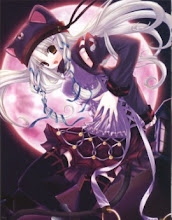Lolita (ロリータ・ファッション, roriita fasshon) is a fashion subculture in Japan that is primarily influenced by Victorian children’s clothing as well as costumes from the Rococo period. Lolita has made this into a unique fashion by adding gothic and original design elements to the look. From this, Lolita fashion has evolved into several different sub styles and has created a devoted subculture in Japan. The Lolita look consists primarily of a knee length skirt or dress, headdress, blouse, petticoat, knee length socks or stockings and rocking horse or high heel/platform shoes. Often to emphasize the childlike look, teddy bears and dolls such as Super Dollfies may be carried.
History
Lolita as it is known today started in the late 1970s with the formation of famous labels like Pink House and Milk. Shortly after that came Baby, The Stars Shine Bright, and Metamorphose temps de fille. It wasn’t until the 1990s when the Lolita fashion trend began to pick up with bands like Malice Mizer and other Visual Kei (or visual type) bands coming into popularity. These bands wore intricate costumes, which fans began adopting as their own style. The style soon spread from its origins in the Kansai region, and ultimately reached Tokyo where it became popularized throughout Japanese youth culture. Today, Lolita fashion has grown so much in popularity that it can be found even in department stores.
Lolita
Although "Lolita" is a reference to Vladimir Nabokov's famous novel, and GothLoli is often worn by teens, most followers of the style do not consider it overtly sexual. Adherents present themselves as Victorian children or baby dolls and prefer to look "cute" rather than "sexy". Many Lolitas claim that the term 'Lolita' doesn't necessarily have anything to do with sex at all. The usage of the word may also be considered wasei-eigo. Japanese culture places a higher value upon extremely youthful appearance and behavior than Western, and some adult women buy large amounts of products, such as Hello Kitty goods, that are typically marketed only to children in the West. GothLoli is perhaps a more visible extension of this phenomenon.
Influence of Lolita and Gothic Lolita
Gothic Lolita was influenced and popularized by the imagery of more feminine Visual Kei (or "visual rock") bands. Visual Kei is a Japanese form of rock music defined by bands featuring performers in elaborate costumes but whose musical style varies. Mana, the cross dressing former leader and guitarist of the Visual Kei band Malice Mizer is widely credited for having helped popularize Gothic Lolita. He coined the terms "Elegant Gothic Lolita" (EGL) and "Elegant Gothic Aristocrat" (EGA) to describe the style of his own fashion label Moi-même-Moitié, which was founded in 1999 and quickly established itself as one of the most coveted brands of the Gothic Lolita scene.
Anime and Manga
Due to the popularity of this cute style with many fans of Japanese animation and comics, characters dressed in the "Gothloli" style may be found in numerous anime and manga. Some of the most prominent are Paradise Kiss, Le Portrait de Petit Cossette, Rozen Maiden, Tsukuyomi - Moon Phase, Othello, Chobits, xxxHOLiC, Princess Princess and Pitaten. Most of these titles appeal primarily to male fans rather than the gothlolis themselves. However, large numbers of gothloli girls are visible at manga events such as comiket. They often buy doujinshi based upon their favorite bands, dolls and movie characters; and some are interested in other kinds of cosplay apart from gothloli style.
Lolita and Cosplay
IMPORTANT: LOLITA IS NOT A COSPLAY.Many people thought that Lolita is also a kind of cosplay but that is TOTALLY WRONG.Lolita is a kind of fashion; Cosplay means that u dress up and make yourself to look like a character in a anime, games and manga.Many people mix up lolita and cosplay as a same type such as clothing of Chii from the anime of Chobits.


